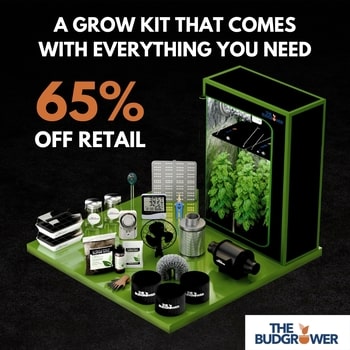If you are looking to start an indoor grow box, choosing the suitable soil is essential for the success of your plants. The best soil type for an indoor grow box is a well-draining mixture high in organic matter, such as peat moss or coconut coir. This soil type will provide your plants with the nutrients they need to thrive while allowing for proper drainage to prevent overwatering. Choosing the right soil for your indoor grow box ensures that your plants will grow strong and healthy.
In this article, we will explore the different types of soil suitable for indoor grow boxes to help you make an informed decision.
Understanding the Different Types of Soil
When it comes to indoor gardening, the type of soil you choose is crucial. Different plants have varying soil requirements, and selecting the right type can significantly affect your indoor garden’s success. Here are some common types of soil used in indoor grow boxes:
Potting Mix
Potting mix is a popular choice for indoor gardening. It provides excellent drainage and aeration for plant roots. This soil type is lightweight and often combines peat moss, vermiculite, and perlite. The potting mix is suitable for a wide range of plants and is easy to work with.
Seed-Starting Mix
The seed-starting mix is designed explicitly for germinating seeds and nurturing seedlings. This lightweight and sterile soil type is ideal for preventing damping and other seedling diseases. The seed-starting mix provides the right balance of nutrients and moisture retention for young plants.
Cactus or Succulent Mix
Cactus or succulent mix is a well-draining soil blend perfect for plants that prefer dry conditions. This soil type is usually gritty and sandy to mimic the arid environments where cacti and succulents thrive. A cactus or succulent mix helps prevent root rot in plants sensitive to overwatering.
Peat-Based Soil
Peat-based soil is derived from decomposed organic matter and is known for its excellent moisture retention properties. This soil type is acidic and ideal for plants that thrive in low pH conditions, such as blueberries and rhododendrons. Peat-based soil provides a stable environment for plant roots to grow and absorb nutrients.
Factors to Consider When Choosing Soil for Your Indoor Grow Box
While each type of soil has its benefits, several factors must be considered when selecting the best soil for your indoor grow box. Keep these considerations in mind to ensure the health and vitality of your plants:
Drainage
Proper drainage is essential for plant health, as waterlogged soil can lead to root rot and other issues. Choose a soil blend that provides adequate drainage to prevent water from pooling around your plants’ roots. Look for well-draining soils that allow excess moisture to flow through easily.
Nutrient Content
Plants rely on soil for essential nutrients to support their growth and development. When choosing soil for your indoor grow box, consider the nutrient content of the soil blend. Look for a soil mix that provides a balanced combination of macronutrients (nitrogen, phosphorus, potassium) and micronutrients (iron, magnesium, calcium) to support healthy plant growth.
pH Level
The soil’s pH level can impact the availability of nutrients to plants. Different plants have varying pH preferences, so it’s essential to choose a soil blend that aligns with the needs of your plants. Conduct a soil pH test to determine the acidity or alkalinity of the soil and adjust as needed to create an optimal growing environment.
Organic vs. Synthetic
Organic soil blends are made from natural ingredients and contain beneficial microorganisms that help improve soil structure and fertility. Synthetic soil blends are formulated with specific nutrient ratios for optimal plant growth. Based on your gardening philosophy and plant preferences, consider whether you prefer organic or synthetic soil for your indoor grow box.
Choosing the Best Soil for Specific Plants in Your Indoor Grow Box
Plants have varying soil requirements based on their growth habits, root systems, and nutrient needs. Selecting the correct soil type is essential to ensure the successful growth of specific plants in your indoor grow box. Here are some recommendations for choosing soil for common indoor plants:
Herbs
Herbs such as basil, mint, and parsley thrive in well-draining soil with adequate moisture retention. Choose a potting mix that provides good aeration for herb roots to prevent waterlogging. Add organic matter such as compost or worm castings to enrich the soil and promote healthy herb growth.
Vegetables
Vegetables like tomatoes, peppers, and lettuce require nutrient-rich soil to support their growth and fruit production. Use a balanced potting mix with added compost or aged manure to provide the necessary nutrients for healthy vegetable plants. Ensure the soil has good drainage to prevent water-related issues in your indoor garden.
Flowers
Flowering plants such as roses, orchids, and geraniums need well-aerated soil with good drainage to thrive. Consider using a peat-based soil blend for flowering plants that prefer slightly acidic conditions. Add perlite or sand to increase drainage in the soil and promote strong root development in your indoor garden.
Tropical Plants
Tropical plants like ferns, palms, and peace lilies prefer a rich, well-draining soil mix with high organic content. Use a potting mix and peat-based soil to create a nutrient-rich environment for tropical plants to thrive. Ensure adequate moisture retention in the soil while maintaining good drainage to prevent soggy conditions.
Tips for Maintaining Healthy Soil in Your Indoor Grow Box
Once you’ve chosen the best soil for your indoor grow box, it’s essential to maintain its health and vitality to support plant growth. Follow these tips to ensure your soil remains fertile and productive:
Monitor Moisture Levels
Monitor the moisture levels in your soil regularly to prevent overwatering or underwatering your plants. Stick your finger into the soil to test its moisture content and adjust your watering schedule accordingly. Use a saucer or tray under your grow box to catch excess water and prevent root rot.
Amend Soil as Needed
Over time, soil can deplete nutrients and organic matter, affecting plant growth. Periodically amend your soil with compost, aged manure, or organic fertilizer to replenish nutrients and improve soil structure. Mix the amendments into the top soil layer to ensure even nutrient distribution for your plants.
Rotate Plants and Refresh Soil
To prevent nutrient depletion and soil compaction, rotate your plants within your indoor grow box and refresh the soil periodically. Move plants to different locations to allow the soil to recover and rejuvenate between plantings. Replace old soil with fresh potting mix or compost to maintain soil fertility and promote healthy plant growth.
Control Pests and Diseases
Pests and diseases can harm plants and weaken the soil in your indoor grow box. Monitor your plants regularly for signs of pests such as aphids, spider mites, or fungus gnats, and take prompt action to control infestations. Use organic pest control methods such as neem oil or insecticidal soap to protect your plants and soil from damage.
Conclusion
Choosing the best soil type for your indoor grow box is essential for creating a healthy and productive environment for your plants. Consider factors such as drainage, nutrient content, pH level, and organic vs. synthetic options when selecting soil for your indoor garden. Tailor your soil choices to meet the specific needs of your plants, whether they are herbs, vegetables, flowers, or tropical plants. By following these guidelines and tips for maintaining healthy soil, you can ensure the success of your indoor gardening endeavors and enjoy a thriving indoor garden year-round. Happy growing!














